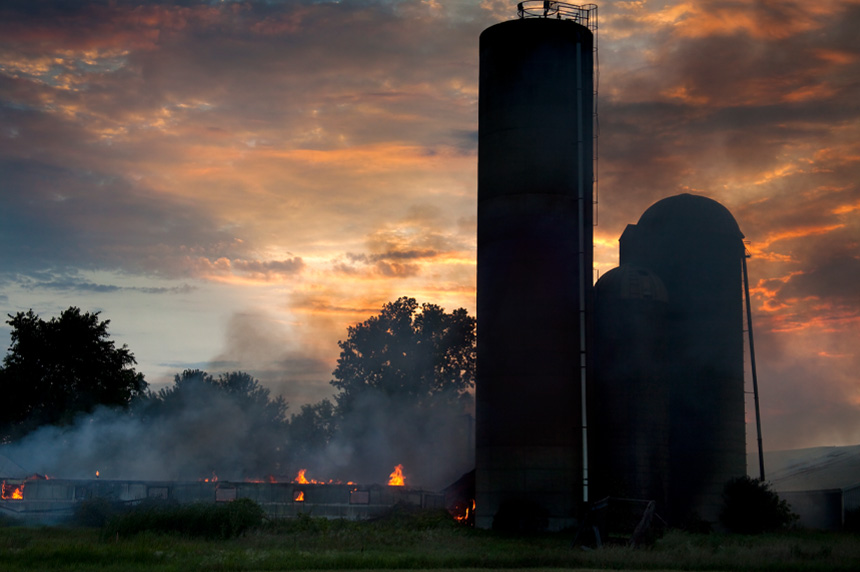Stay up to date with the latest OSINT news from around the world
This week in open-source intelligence (OSINT) news, the focus is back on Ukraine. The attack on the bridge from Russia to Crimea has the Kremlin searching for suspects and some intelligence researchers questioning their methods. Newsweek fact-checks their publicized allegations and the criticism of the images produced.
Russia may also be rapidly running out of long-range missiles. Iran has sold the country other weapons in the past and may be in a position to help replenish their stockpile. The Conflict Observatory is also analyzing the damage to crop storage infrastructure and whether Russian armies are purposefully targeting the important civilian food supply.
Lastly, China is using its tech influence to increase the use of surveillance worldwide. Meanwhile, domestic intelligence agencies reflect on the broad use of the term “OSINT.”
This is the OSINT news you need to know this week:
Who sabotaged the bridge to Crimea?
Russia has carried out arrests in connection with what they are calling “a terrorist attack” that severely damaged the bridge connecting Russia and the Crimean Penninsula. It has pinpointed two trucks and several citizens of Russia, Armenia and Ukraine to be responsible. But OSINT researchers on Twitter have noticed inconsistencies in the images Russia released to prove its case. Newsweek’s fact-checking team looked into the claim.
An x-ray image of a tractor trailer was released by Russia showing what is alleged to be explosives in the cargo, identifying it as the vehicle responsible for carrying out the attack on the bridge to Crimea. The problem? The Russian produced x-ray image and the photo on CCTV of a truck are different types, with one having an extra rear axle. The images are both being used by Russian state outlets. But fact-checkers have found that Russia has not claimed they are the same truck and, in fact, have identified two different trucks as being responsible — meaning this isn’t the technical faux pas that some researchers have claimed. However, no independent researchers have been able to assign blame for the attack yet.
“The load was then allegedly placed on a second truck, an International ProStar (which also had a red cabin, adding to the confusion), which was not scanned, although it was searched by the security guards when coming onto the bridge.”
— Yevgeny Kuklychev, Newsweek
Comparing “OSINT” for the public and private sectors
The war in Ukraine and the proliferation of online data has given rise to more OSINT practitioners and recognition of that practice by the public. But the broad use of the term “open-source intelligence” to refer to the practice from government intelligence agencies to members of the public operating entirely online has the Stanley Center questioning the implications of the use of “OSINT” in its popular descriptions. The process for verifying and analyzing information may vary dramatically depending on who is at the helm of the research. But public information analysts are less likely to have the same stringent standards as the government but more likely to be producing information for a wide audience.
The term OSINT has widespread use, sometimes erroneously referring to any publicly available information (PAI). But the intelligence in OSINT requires the analysis and verification of the open-source information acquired. Intelligence also often refers to the practice of gathering reports and preparing them for leadership to take an action, rather than sharing on social media. The rapid dissemination of public information in this format and lack of accountability has caused the Stanley Center’s report to call on hobbyist practitioners to reflect on their use of the term OSINT, document their practices and publicize their standards of practice.
“The working definition of intelligence used in this paper is, therefore, that intelligence is sensemaking activity that supports a decision maker.”
— Neil Ashdown, Stanley Center
Iran may have missiles for the Kremlin
Russia is low on long-range missiles, but sanction-depressed Iran has plenty stockpiled, as well as the economic motivation to make a deal. Moscow has been buying Iran’s “kamikaze drones” already in its war efforts. In light of the use of drones and its recent large-scale missile attacks, intelligence suggests that Russia's long-range precision weaponry is likely running low.
According to Ukraine, Russia launched 83 missiles in a single day targeting mostly civilian infrastructure. The dwindling supply of long-range missiles will make large-scale attacks like that more difficult to carry out in the future. Due to sanctions and the expense of production, they’re also not likely to be able to replenish their stock domestically anytime soon. According to researchers, the dwindling supply of modern aviation has caused Russia to begin launching Cold War-era missiles during airstrikes. The depletion is a silver lining for Ukrainians for now, but if Iran strikes a deal it will be detrimental to Ukraine’s urban centers.
“This has meant that fixed-wing tactical aircraft have been generally incapable of striking targets beyond the front lines without putting themselves and their crews at extreme risk.”
— Thomas Newdick, Tyler Rogoway, The Drive
Creating an OSINT “buyers club”
The value of open-source intelligence has become clear, but government agencies still struggle to implement it effectively into their operations. The sheer amount of information to wade through is one of a host of issues that plagues analysts, along with bureaucracy and resistance to change. Peritz of War on the Rocks suggests creating a “buyers club” by working with the nation’s top universities to create an open-source center outside of the government’s bureaucratic reach but available for their national security needs.
An independent entity could operate parallel to the government’s agencies but be able to sidestep its more cumbersome processes. Many universities are already collecting and applying open-source data, making a proposal to contribute the same data to analysts hardly a stretch. The libraries could maintain catalogues of data as they are already operationally equipped to do, and the financial benefits would be mutual.
“It’s devilishly hard to solve technical problems, and the government should help fund and solve those thorny challenges. However, it is perhaps even more difficult to solve collective action problems because there is often no clear path against entrenched interests.”
— Aki Peritz, War on the Rocks
China’s growing tech influence
China’s cyber ecosystem has extended beyond its domestic borders and has extended to a worldwide influence. The investment in surveillance technology has helped boost its economic power on the international tech market. China’s proliferation can especially be seen in the Global South and particularly in African nations By using local demand to advance its own geopolitical interests, Beijing has increased its cyber footprint globally.
The China-Africa partnership was established to promote the digitization and development aid in Africa. In some countries, such as South Africa, the increase in technology surveillance tools has lead to an increased digital policing presence. Through its efforts, analysis suggests Beijing hopes to influence international norms through its promotion of surveillance techniques.
“China increasingly acts in accordance with its policy of cyber sovereignty. In 2017, the government told companies like Tencent, a giant internet-based platform and company, to shut down websites that host content deemed as socially and politically threatening. ”
— Matthew P. Funaiole, et. al., Hidden Reach
Ukraine’s crop storage impacted by war
Ukraine’s crop storage infrastructure has sustained substantial damage since February, according to analysis of satellite imagery from the Conflict Observatory. According to the report, roughly one in six facilities has been damaged since the war began early this year, and a significant number are believed to be in Russian occupied and controlled territories. The study was conducted entirely remotely using satellite imagery to access damage through change analysis.
The rate of crop storage infrastructure damage is being further studied to determine if the high rate of impact is a natural consequence of conflict or an intentional targeting of civilian infrastructure by the Russian army, the latter of which would constitute a potential war crime.
“Russia-aligned forces have allegedly been damaging and destroying Ukraine’s crop storage facilities since the full-scale war began on 24 February. Silos, crop elevators, grain bins, and other critical crop storage infrastructure have been visibly damaged from multiple weapons systems, including artillery, long-range missiles, aerially-dropped ordnance, and other munitions”
— Conflict Observatory
Every other week, we collect OSINT news from around the world. We continue to keep a close watch on Russia's war in Ukraine, especially on Twitter. We’re also gathering information on cyberthreats, federal intelligence strategies and much more. Find us on Twitter and share the OSINT news you’re keeping up with.
To keep up to date on the latest OSINT and cyber security news, visit authentic8.com/blog.
Tags OSINT news

